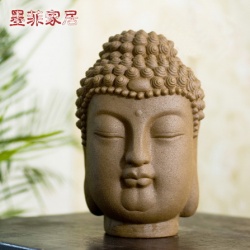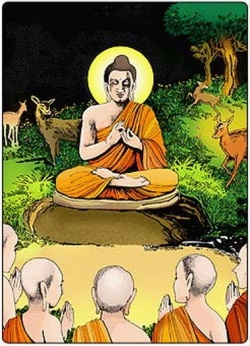Difference between revisions of "What is problem with Attachment?"
m (1 revision: links) |
|
(No difference)
| |
Latest revision as of 11:13, 7 September 2013
Although attachment may at first appear to be much less destructive than anger and hatred, in terms of being caught up in the uncontrolled process of rebirth, it is actually the bigger evil. Attachment to pleasure and ultimately to life itself as our inborn survival instinct, is the main type of misunderstanding that holds us prisoner in samsara.
An example to illustrate attachment that I love:
In the South of India, people used to catch monkeys in a very special way. Actually they let monkeys catch themselves. What they did is cutting a small hole in a coconut, just large enough for a monkey to put its hand in. Next, you fix the coconut to a tree, and fill it with a sweet. The monkey smells the sweet, squeezes its hand into the coconut, grabs the sweet and .... finds that the fist does not fit through the hole. Now the trick is, that the last thing the monkey will think of is to let go of the sweet; and it holds itself prisoner. Nothing could be easier for a human being who comes and catches it.
The Buddha compared desires to being in debt. If you owe money to the bank for your house, every month you have to pay. In the end, you will own the house. With sensual desires however, you cannot pay off the debt; they arise again and again. Hunger, thirst, lust for sex, warmth, coolness, they all come back again and again. Trying to fulfil our desires is like carrying water to the sea; a never ending task and ultimately completely useless.
In some very direct words of the Buddha:
"I have killed all of you before.
I was chopped up by all of you in previous lives.
We have all killed each other as enemies.
So why should we be attached to each other?"
Ajahn Sumedho, in 'Teachings of a Buddhist Monk':
"Desire can be compared to fire. If we grasp fire, what happens? Does it lead to happiness?
If we say: "Oh, look at that beautiful fire! Look at the beautiful colors! I love red and orange; they're my favorite colors," and then grasp it, we would find a certain amount of suffering entering the body. And then if we were to contemplate the cause of that suffering we would discover it was the result of having grasped that fire. On that information, we would hopefully, then let the fire go. Once we let fire go then we know that it is something not to be attached to.
This does not mean we have to hate it, or put it out. We can enjoy fire, can't we? It's nice having a fire, it keeps the room warm, but we do not have to burn ourselves in it."
John Snelling, from 'Elements of Buddhism':
"If the basic project of mainstream Buddhist practice is to unmask the ego illusion for what it is, one of the main prongs of attack is directed against desire. Desire gets a very bad press in the Buddhist scriptures. It is a poison, a disease, a madness. There is no living in a body that is subject to desire, for it is like a blazing house.
Now, desire lives and grows by being indulged. When not indulged by the application of ethical restraint and awareness, on the other hand, it stabilizes and begins to diminish, though this is not an easy or comfortable process, for the old urges clamor for satisfaction for a long time.
This kind of practice cuts directly against the main currents of modern consumer society, where desire is energetically encouraged and refined to new pitches and variations by the powerful agencies of marketing and publicity. But it also cuts against the more moderate desires-for family, wealth, sense-pleasures and so on sanctioned in simpler, more traditional societies, including the one into which the Buddha was born. We can never be at peace while desire is nagging at us."

